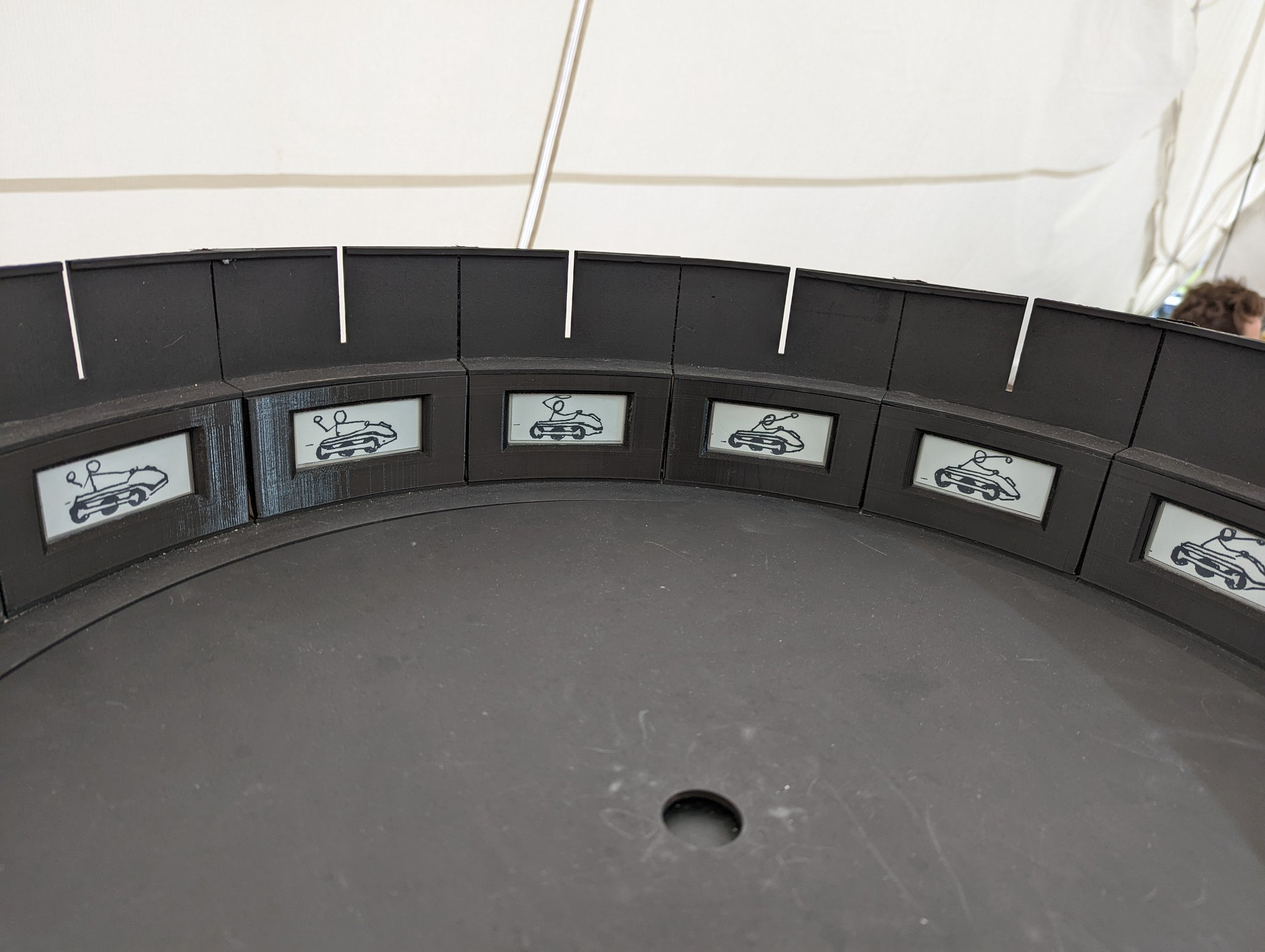Raspberry Pi and RP2040 Power E-Paper Zoetrope
Robot maker and developer Brian Corteil has created a modern take on the classic zoetrope using our favorite SBC, the Raspberry Pi and microcontroller the RP2040. This digital zoetrope project was featured this year at EMFCamp—a UK based outdoor gathering for makers with an affinity for DIY micro-electronics projects. If you haven’t heard of a zoetrope before, these are early animation devices that display a series of images that rotate around to create the illusion of movement.
This isn’t Corteil’s first rodeo with a digital zoetrope, he previously created one that used 12 OLED displays but the device spun so fast the refresh rate was catching up with the displays causing the animation effect to be lost. This new project uses e-Ink displays and has resolved the issue with great success.
It’s no secret that we’re a sucker for Corteil’s projects. We’ve had him on our Raspberry Pi-themed podcast, The Pi Cast, multiple times to show off some of his coolest creations. Past projects include his Crazy Doofus robot which has a super cute OLED mouth and his homemade Cyberdeck that packs a Pi inside with tons of cool features.
The new digital zoetrope is huge and proved to be somewhat of a challenge to transport but it’s just big enough to fit through a standard doorway. It’s constructed with laser-cut plywood components and also includes 3D-printed mounting brackets to hold a series of 15 individual Pimoroni Badger 2040 e-Ink displays. It relies on multiple Raspberry Pis including a Raspberry Pi Pico to control the motor controller that drives the motors to make it spin. You may be wondering how the system maintains power while rotating—something that baffled us, as well. Corteil confirmed on the show that a split ring is used to transfer power to the hardware, allowing it to spin freely without tangling any cables.


In addition to the Pico, an additional Raspberry Pi 4 is used as a controller for a flatbed scanner. This scanner enabled users to create original animations on the spot. Corteil developed a cell sheet that users could draw on during EMF and upload directly to the zoetrope in real-time.
If you want to see this Raspberry Pi project in action, check it out on The Pi Cast where Corteil dives into all of the finer details about its construction and gives us an upclose look at the inner workings of the zoetrope. You can also follow him over at Twitter and find more project details using the tag #ZoetropeMadScience.
Get Tom's Hardware's best news and in-depth reviews, straight to your inbox.

Ash Hill is a contributing writer for Tom's Hardware with a wealth of experience in the hobby electronics, 3D printing and PCs. She manages the Pi projects of the month and much of our daily Raspberry Pi reporting while also finding the best coupons and deals on all tech.
